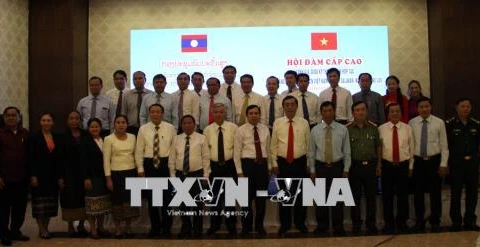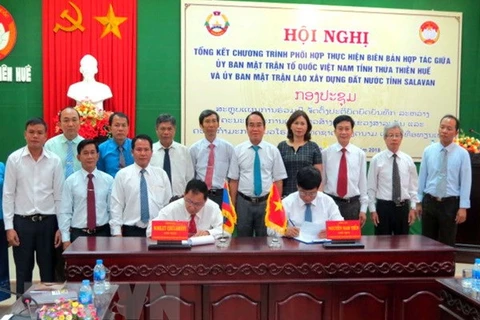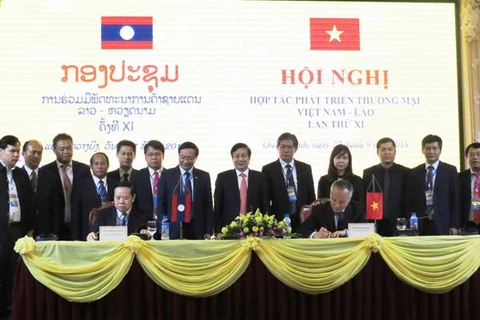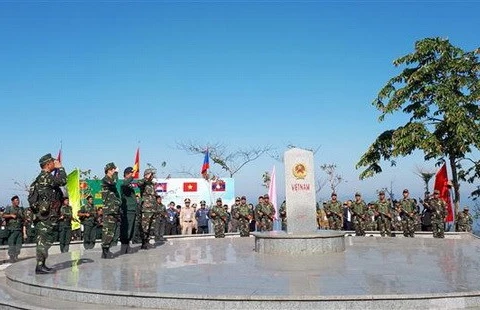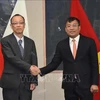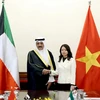 Vice Chairman of the Quang Binh provincial People’s Committee Le Minh Ngan addresses the conference in Dong Hoi city on November 13 (Photo: VNA)
Vice Chairman of the Quang Binh provincial People’s Committee Le Minh Ngan addresses the conference in Dong Hoi city on November 13 (Photo: VNA) Quang Binh (VNA) – A conference was held in Dong Hoi city, in the central province of Quang Binh, on November 13 to look into the implementation of certain documents on the Vietnam-Laos borderline, border markers, and border gates.
On March 16, 2016, the Vietnamese and Lao Governments signed a protocol on the countries’ borderline and border markers, along with an agreement on regulations for land border and border gate management. These documents took effect on September 5, 2017.
Addressing the conference, Vice Chairman of the Quang Binh provincial People’s Committee Le Minh Ngan said the treaties are important legal documents that fully and precisely describe the borderline and border markers’ locations, while also specifying the responsibility and obligations in managing and protecting the shared boundary of each side. They have helped to improve border management and build a Vietnam-Laos border of peace, stability, cooperation, and development for the sake of the two peoples.
He noted that in order to effectively realise these documents, authorities of all levels and the general public must come to understand their terms, implement measures, and promote a high consensus in the matter, especially among border residents, in the management and protection of the borderline and border markers.
An official of the western border division of the foreign ministry’s National Boundary Commission informed participants on the Vietnam-Laos and Vietnam-Cambodia border situation, some noteworthy issues in local land border management, and the realisation of the treaties.
Vietnam and Laos share a border of nearly 2,340 km that runs across through 10 Vietnamese provinces: Dien Bien, Son La, Thanh Hoa, Nghe An, Ha Tinh, Quang Binh, Quang Tri, Thua Thien-Hue, Quang Nam, and Kon Tum.
The line also appears in 10 Lao provinces: Phongsaly, Luang Prabang, Houaphan, Bolykhamsay, Khammoune, Savannakhet, Salavan, Xiengkhouang, Sepon, and Attapeu.
The two countries marked the completion of a project on increasing and upgrading border markers along their boundary in March 2016.
Under the project, 1,002 markers and stakes were planted along the joint border, compared to only 199 markers before 2008. These were increased in necessary areas to further clarify the border in reality. Meanwhile, existing markers, especially those at border gates, were upgraded to create a system of solid and modern border markers, officials said. –VNA
VNA
